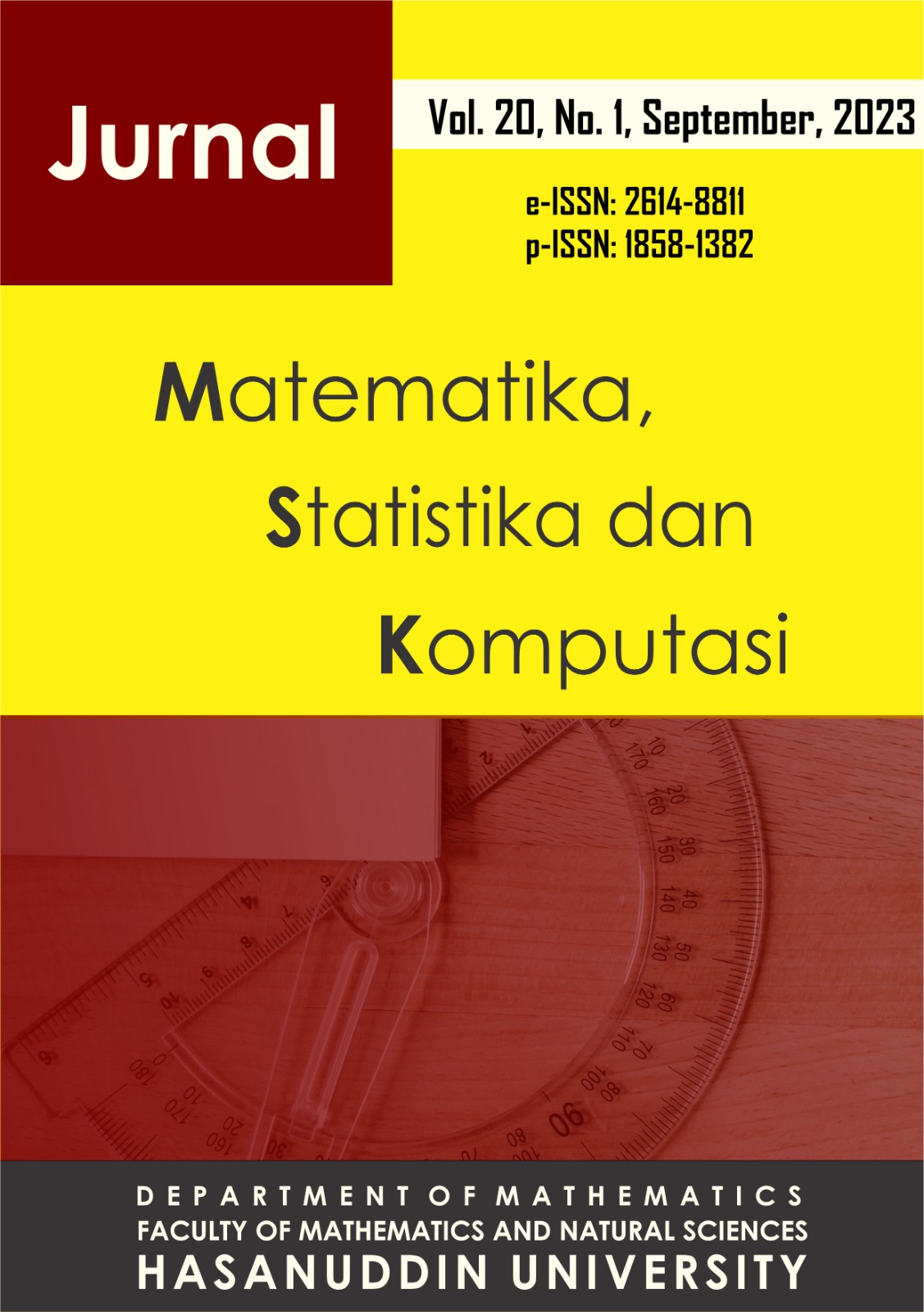Study of Regularized Generalized Structured Component Analysis to Overcome Multicollinearity in Component-Based SEM
DOI:
https://doi.org/10.20956/j.v20i1.28069Keywords:
Regularized GSCA, Multicollinearity, SEM, PovertyAbstract
Multicollinearity is one of the issues that may arise in the analysis of Structural Equation Modeling (SEM). An indication of multicollinearity is the high correlation between latent variables and the correlation between indicators forming the latent construct. Multicollinearity causes the interpretation of SEM analysis to be inappropriate. In this study, Regularized generalized structured component analysis (RGSCA) is used as a solution to overcome multicollinearity in component-based SEM. The research aims to apply RGSCA to East Java poverty data, which contains multicollinearity. The first step is analyze data using GSCA, however the weights of and indicators are not significant, and the three estimated path coefficients are also not significant at the 95% confidence interval. The high correlation value between the indicators further indicates the presence of multicollinearity. Futhermore, the data are analyzed using RGSCA with ridge parameters namely which provides minimum prediction error (CV). The results of the analysis reveal that all estimation of loading factors, weights and path coefficients are significant at 95% confidence intervals. The interpretation of the path coefficient results suggests that education, health, and economy significantly influence poverty, while health and economy also have a significant effect on education, and health additionally exhibits a significant effect on economy. The overall model evaluation results obtained a FIT value of 0.662, indicating that the model can explain about 66.2% of the data variation.Downloads
References
Fakfare, P., Promsivapallop, P., dan Manosuthi, N., 2023 . Applying Integrated Generalized Structured Component Analysis to Explore Tourists’ Benefit Consideration and Choice Confidence toward Travel Appscape. Technological Forecasting and Social Change. 188. 122321.
Gokmen, S., Dagalp, R., dan Kilickaplan, S., 2020. Multicollinearity in Measurement Error Models. Communications in Statistics – theory ang Methods. 51. 474-485.
Gujarati, D. N., 2004. Basic Econometrics, Fourth Edition. The McGraw Hill Companies Inc. New York.
Hastie, T., Tibshirani, R., & Friedman, J., 2001. The elements of statistical learning: data mining, inference, and prediction. Springer. New York.
Hox, J. dan Bechger, T., 1999. An Introduction to Strutural Equation Modeling.
Family Science Review, 11, 354-373
Hwang, H. dan Takane, Y., 2004. Generalized Structured Component Analysis.
Psychometrika, 69, 81-99.
Hwang, H., 2009. Regularized Generalized Structured Component Analysis. Psychometrika 74, 517–530.
Hwang, H. dan Takane, Y., 2014. Generalized Structured Component Analysis: A
Component-Based Approach to Structural Equation Modeling. CRC Press, New
York.
Marsh, H. W., Dowson, M., Pietsch, J., & Walker, R. 2004. Why Multicollinearity Matters: A Reexamination of Relations Between Self-Efficacy, Self-Concept, and Achievement. Journal of Educational Psychology, 96(3), 518–522.
Manosuthi, N., Lee, J.S., dan Han, H., 2020. An Innovative Application of Composite-Based Structural Equation Modeling in Hospitaliy Research with empirical Example. Cornell Hospitality Quarterly. 62(1). 139-156
Munerah, S., Koay, K.Y., dan Thambiah, S., 2021. Factors Influencing No-green Consumers’ Purchase Intention : A Partial Least Squares Structural Equation Modeling (PLS-SEM) Approach. Journal of Cleaner Production. 280. 124192.
Nuhaliza, W., Kusnandar, D., & Perdana, H., 2022. Penerapan Structural Equation Modeling pada Analisis Kepuasan Mahasiswa Terhadap Sistem Informasi Akademik Universitas Tanjungpura. Buletin Ilmiah Math. Stat. dan Terapannya (Bimaster). Volume 11, No. 3 (2022), hal 513 – 522.
Putriama, J., Arina, F., & Ekawati., R., 2014. Pengaruh Penerapan Total Quality Management Melalui Produktivitas Karyawan Terhadap Kinerja Perusahaan Dengan Metode Structural Equation Modeling (SEM) di PT. X. Jurnal Teknik Industri Untirta. Volume 2, No. 2 (2014).
Raykov, T. dan Marcoulides, G.A., 2006. A First Course in Structural Equation
Modeling, Second Edition, Lawrence Erlbaum Associates, London.
Siwalette, R., dkk, 2022. Analisis Faktor-Faktor Yang Berpengaruh Terhadap Pembelian Secara Online di Kota Ambon Menggunakan Metode Structural Equation Modeling - Partial Least Square (SEM-PLS). Journal of statistics and Its Application. Volume 4, No. 1 (2022).
Tenenhaus, M., 2014. Component-based Structural Equation Modeling. Total quality management and business Excellence. 19. 871-886.
Downloads
Published
How to Cite
Issue
Section
License
Copyright (c) 2023 Author and publisher

This work is licensed under a Creative Commons Attribution 4.0 International License.

This work is licensed under a Creative Commons Attribution 4.0 International License.
Jurnal Matematika, Statistika dan Komputasi is an Open Access journal, all articles are distributed under the terms of the Creative Commons Attribution License, allowing third parties to copy and redistribute the material in any medium or format, transform, and build upon the material, provided the original work is properly cited and states its license. This license allows authors and readers to use all articles, data sets, graphics and appendices in data mining applications, search engines, web sites, blogs and other platforms by providing appropriate reference.








